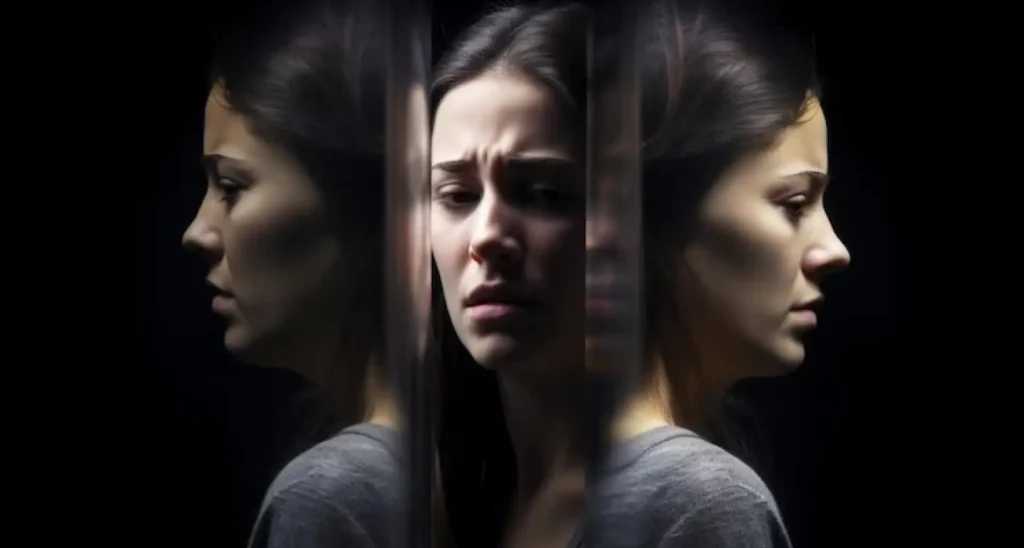Schizophrenia vs Bipolar Disorder: Understanding the Differences
Mental health conditions like schizophrenia and bipolar disorder are often misunderstood and confused. These two disorders, while distinct, share some similarities that can lead to confusion. We aim to clear the air by exploring the differences between schizophrenia and bipolar disorder, their symptoms, causes, and treatment options.
Understanding these differences is crucial for proper diagnosis and treatment, ensuring that those affected receive the support and care they need.
What is Schizophrenia?
Schizophrenia is a chronic mental health disorder that affects how a person thinks, feels, and behaves. It is characterized by episodes of psychosis, including delusions, hallucinations, and disorganized thinking. Schizophrenia affects approximately 1% of the population and typically emerges in late adolescence or early adulthood.
Symptoms
The symptoms of schizophrenia can be categorized into positive, negative, and cognitive symptoms.
- Positive Symptoms: These include hallucinations (seeing or hearing things that aren’t there), delusions (strongly held false beliefs), and disorganized speech or behavior.
- Negative Symptoms: These involve a decrease in the ability to function normally, such as reduced speaking, lack of emotion, and withdrawal from social activities.
- Cognitive Symptoms: These include problems with attention, memory, and executive functioning (the ability to plan and organize).
Causes
The exact cause of schizophrenia is not fully understood, but it is believed to be a combination of genetic, biological, and environmental factors.
- Genetic Factors: A family history of schizophrenia increases the risk of developing the disorder.
- Biological Factors: Abnormalities in brain chemistry and structure, particularly involving neurotransmitters like dopamine and glutamate, are associated with schizophrenia.
- Environmental Factors: Prenatal exposure to infections, malnutrition, and psychosocial factors such as stress can contribute to the risk.
What is Bipolar Disorder?
Bipolar disorder, formerly known as manic-depressive illness, is a mental health condition characterized by extreme mood swings that include emotional highs (mania or hypomania) and lows (depression). This disorder affects about 2.8% of the U.S. population and can develop at any age, though it often appears in the late teens or early adulthood.
Types of Bipolar Disorder
There are several types of bipolar disorder, each defined by the pattern of mood episodes.
Bipolar I Disorder: Characterized by manic episodes that last at least seven days or by manic symptoms that are so severe that immediate hospital care is needed. Depressive episodes also occur, typically lasting at least two weeks.
Bipolar II Disorder: Defined by a pattern of depressive episodes and hypomanic episodes, but not the full-blown manic episodes characteristic of Bipolar I.
Cyclothymic Disorder: Periods of hypomanic and depressive symptoms that last for at least two years (one year in children and adolescents), but the symptoms do not meet the diagnostic requirements for a hypomanic episode and a depressive episode.
Symptoms
The symptoms of bipolar disorder can vary widely depending on the type and the individual.
- Manic Symptoms: These include increased energy, euphoria, decreased need for sleep, grandiosity, increased talkativeness, racing thoughts, and risky behavior.
- Depressive Symptoms: These include feelings of sadness, emptiness, or hopelessness, loss of interest in activities, changes in appetite and sleep patterns, fatigue, and thoughts of death or suicide.
- Hypomanic Symptoms: Similar to manic symptoms, but less severe and do not cause significant impairment in social or occupational functioning.
Causes
The causes of bipolar disorder are complex and likely involve a combination of genetic, biological, and environmental factors.
- Genetic Factors: A family history of bipolar disorder increases the risk, suggesting a genetic component.
- Biological Factors: Abnormalities in brain structure and function, as well as neurotransmitter imbalances, are associated with bipolar disorder.
- Environmental Factors: Stressful life events, trauma, and significant life changes can trigger mood episodes in susceptible individuals.
Key Differences Between Schizophrenia and Bipolar Disorder
While both schizophrenia and bipolar disorder involve significant mood and behavioral changes, their symptoms and manifestations differ.
Hallucinations and Delusions: These are more characteristic of schizophrenia. While they can occur in severe cases of bipolar disorder (typically during manic episodes), they are a hallmark of schizophrenia.
Mood Episodes: Bipolar disorder is defined by the presence of manic and depressive episodes. Schizophrenia, on the other hand, primarily involves psychotic symptoms without the distinct mood cycles seen in bipolar disorder.
Disorganized Thinking: This is a core symptom of schizophrenia but is less common in bipolar disorder, where mood changes are more prominent.
1. Onset and Duration
Age of Onset: Schizophrenia typically appears in late adolescence or early adulthood, while bipolar disorder can develop at any age, though it often emerges in late teens to early adulthood.
Episode Duration: Schizophrenia involves continuous or recurring episodes of psychosis, while bipolar disorder involves episodic mood swings that can last days, weeks, or months.
2. Behavior and Mood
Behavioral Differences: Individuals with schizophrenia may exhibit more severe disruptions in thinking and behavior, such as disorganized speech and catatonia. Those with bipolar disorder may exhibit behaviors related to their mood episodes, such as hyperactivity during mania or lethargy during depression.
Mood Fluctuations: Mood swings in bipolar disorder are more pronounced and distinct, ranging from mania to depression. Schizophrenia involves less pronounced mood swings but significant disruptions in thought and perception.
Treatment Options
While both conditions are lifelong and require ongoing management, treatment approaches can differ.
- Schizophrenia Treatment:
Medications: Antipsychotic medications are the cornerstone of treatment, helping to manage symptoms like delusions and hallucinations.
Therapy: Cognitive-behavioral therapy (CBT) and supportive therapy can help individuals manage symptoms and improve functioning.
Lifestyle Changes: Stress management, a healthy diet, and regular exercise can support overall well-being.
- Bipolar Disorder Treatment:
Medications: Mood stabilizers, antipsychotics, and antidepressants are commonly used to manage mood swings.
Therapy: Psychotherapy, such as CBT and interpersonal therapy, helps individuals understand their condition and develop coping strategies.
Lifestyle Changes: Regular sleep patterns, routine physical activity, and stress management are crucial for managing mood episodes.
Conclusion
Understanding the differences between schizophrenia and bipolar disorder is essential for proper diagnosis and treatment. While both conditions involve significant challenges, effective management and support can greatly improve the quality of life for those affected. If you or a loved one shows symptoms of either condition, seek professional help to ensure appropriate care and support.
Frequently Asked Questions (FAQs)
Question 1: Can someone have both schizophrenia and bipolar disorder?
Ans: It is possible to have both schizophrenia and bipolar disorder, a condition known as schizoaffective disorder. This disorder includes symptoms of both schizophrenia (such as hallucinations or delusions) and mood disorder symptoms (such as mania or depression).
Question 2: What is the main difference between schizophrenia and bipolar disorder?
Ans: The main difference lies in the primary symptoms and mood patterns. Schizophrenia is characterized by psychotic symptoms such as delusions and hallucinations, while bipolar disorder involves significant mood swings between manic and depressive episodes.
Question 3: How can I support a loved one with these conditions?
Ans: Supporting a loved one involves understanding their condition, being patient, and encouraging them to seek professional help. Practical ways to support them include helping with medication management, accompanying them to therapy appointments, and providing a stable, supportive environment.
References
Title: Recognizing and Treating Bipolar Disorder and Schizophrenia
Link:https://www.mcleanhospital.org/video/recognizing-and-treating-bipolar-disorder-and-schizophrenia
Written & Published By: Mass General Brigham McLean
Title: Bipolar Disorder and Schizophrenia: What Are the Differences?
Link: https://www.healthline.com/health/bipolar-disorder/bipolar-vs-schizophrenia
Written & Published By: Healthline
Title: Bipolar and schizophrenia: What are the similarities and differences?
Link: https://www.medicalnewstoday.com/articles/324440
Written & Published By: Medical News Today















